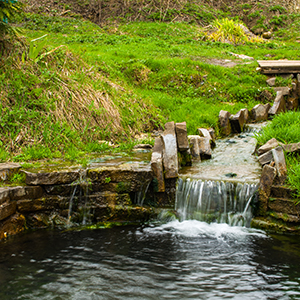changing agricultural practices – a vision of hope

The land is a living, breathing entity. If you love the land, the earth, it’ll love you back. It’s just the way it’s always been… there’s no big secret to it. If you want a relationship with the earth, you just have to love it… We’re not exclusive from nature. We’re part of it! … Part of everything around us.’1‘Archie Roach sings from the soul’ in Dumbo Feather, No. 50, 2017.
Stewardship is a fundamental concept found in many religions including Baha’i, Buddhism, Islam, Christianity, Judaism, and Hinduism. It implies that God is imbued in all of creation and that the role of humanity is to be responsible managers of this creation.2United Nations Environment Program, From Islam to Buddhism: Faiths Have Long Encouraged Stewardship of Nature Stewardship is the commitment of one’s self and possessions to God’s service and when it comes to caring for the environment, it means using all our personal and community resources to this end. There is a strong link between stewardship and environmentalism. Environmental stewardship is usually thought of as both reducing human impact on the natural world and using our technology and insights into natural ecosystems to save life from otherwise certain elimination.
Agriculture, in occupying thirty-eight per cent of the Earth’s terrestrial surface, is both the largest user of land on the planet and humankind’s largest engineered ecosystem.3Charles Massy, Call of the Reed Warbler: A New Agriculture, A New Earth, University of Queensland Press, 2017, 4. Indeed today, in what could be seen as a horrifying litany, industrial agriculture is underpinned by seven main practices (along with a concomitant heavy dependence on fossil fuels): (1) intensive tillage; (2) monocultures; (3) application of synthetic fertilisers; (4) intensive irrigation; (5) chemical pest and weed control; (6) manipulation of plant and animal genomes; and (7) factory farming of animals. It is here that the cracks in the wall of modern agriculture appear to be increasing. We see around us the decline of insect populations, increased demand for food due to population expansion, land degradation, biodiversity loss, water shortages, increased incidence and severity of drought and flood events and chemical contamination. Where does one find hope in such a scenario, for we need stories of hope that offer a different vision of our agricultural practices. Such actions are crucial if we are to be motivated to bring about large-scale change in this area.
Hope comes about through empowering farmers and communities to find methods of farming that will enable the land to be regenerated whilst ensuring a healthy income for the farmer. Hope comes when one witnesses a balance between benefits to people, livestock, crops and the environment. This is good stewardship.
One such method is farmer managed natural regeneration with the work initiated by Tony Rinaldo. Another farming practice is regenerative agriculture, extensively written about by Charles Massy. Projects of good stewardship are to be found wherever farmers come to intimately know their land.
‘Such is the power of both the individual and collective human mind… to emphasise the optimistic side of this factor, there is a faint but strengthening glimmer of hope: a gathering insurgency against the above stupidity (of failing to be stewards of Earth). This rebellion is coming from those closest to Mother Earth: the farmers. But it is also coming from their urban cousins who seek better health, tastier and more ‘wholesome’ food, a closer connection to Earth, and a life lived more simply and meaningfully in a sharing community… For me, when I think about the big-picture stuff and the overwhelmingly important role of self-organisation in our complex systems, these acts of agricultural and urban-food and lifestyle defiance against the ruling Mechanical mind are more than acts of insurgency. They are the emergent properties that enable all self-organising systems to direct themselves towards ongoing survival and life.’4Massy, Call of the Reed Warbler, 352, 353.
… Read more about this topic in Handbook of Hope: Emerging Stories Beyond a Disintegrating World by Cath Connelly, available here.